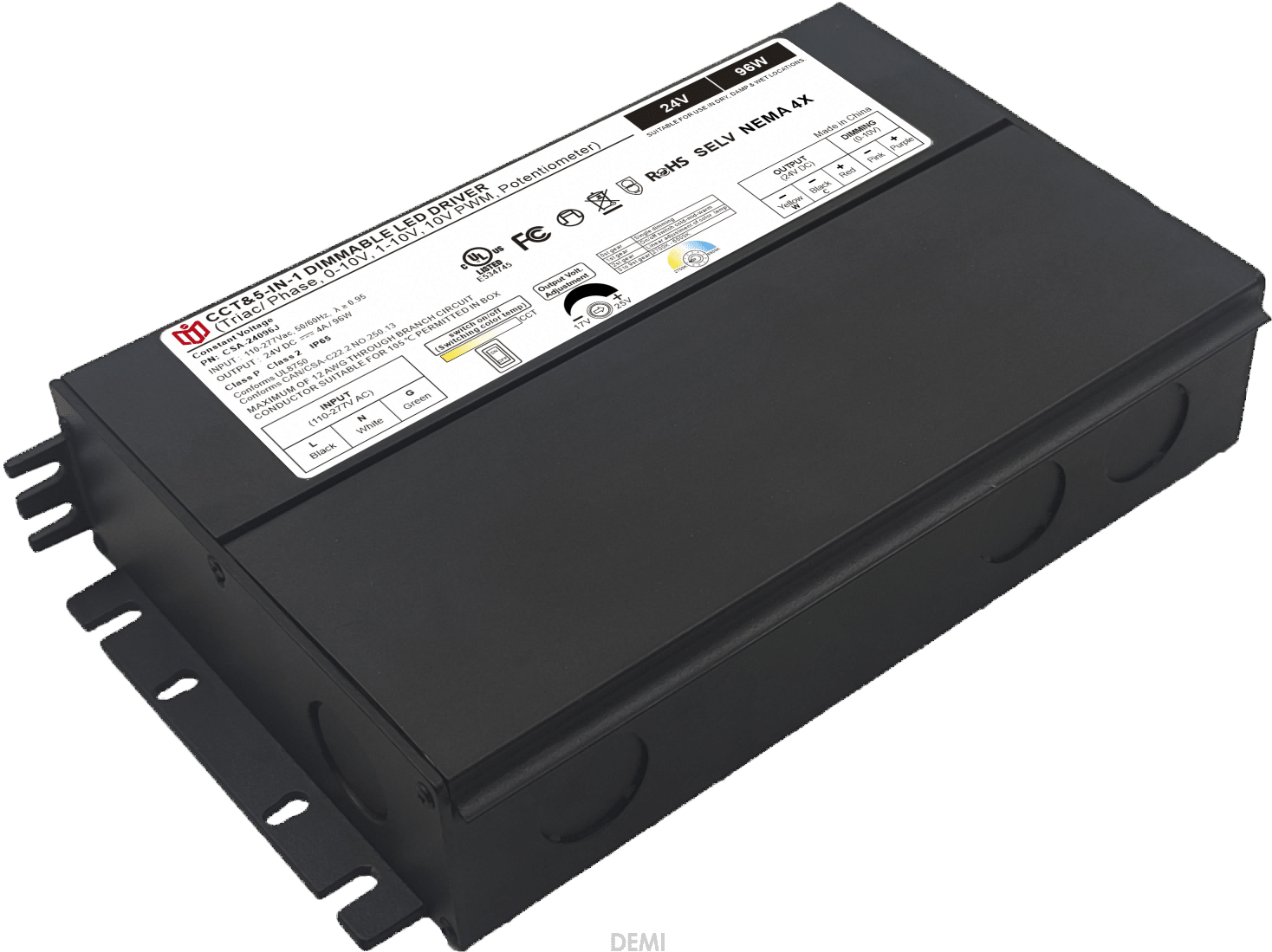Details Define Quality—Dissecting the Precision Manufacturing of TRIAC Dimming Power Supplies
The Foundation: Material Selection & Component Sourcing
Every high-performance TRIAC dimming power supply begins with impeccable material curation. Engineers handpick semiconductor-grade silicon wafers exhibiting uniform crystal structures, while conductive traces utilize silver-plated copper with <0.05% impurity levels. Even seemingly minor elements like solder paste undergo viscosity testing under controlled humidity chambers to prevent microvoid formation during reflow. This obsession with raw material purity ensures optimal electron flow pathways critical for stable phase-cutting operations.
Microscopic Precision: Laser Trimming and Wafer Dicing
Advanced facilities employ excimer lasers calibrated to ±2 nanometers for resistor network trimming – adjusting resistance values across hundreds of parallel circuits simultaneously. Computer numerical control (CNC) dicing saws then segment monolithic IC blocks into identical chips with submicron parallelism tolerances. Such subsurface accuracy guarantees consistent switching thresholds across production batches, eliminating erratic flicker in LED arrays during load transitions.
Thermal Management Architecture
Multilayer ceramic substrates act as thermal spreaders beneath each TRIAC package, strategically positioned near heat sink contact points calculated via finite element analysis simulations. Conformal coating application follows precise robotic trajectories, creating dielectric barriers just 15 microns thick yet capable of withstanding 12kV isolation tests. These microengineered solutions prevent hotspot propagation that could destabilize timing circuits over thousands of on/off cycles.
Automated Optical Inspection Protocols
Fourteen high-resolution cameras capture multispectral images of assembled PCBs at 30 frames per second, cross-referencing design schematics down to 0.01mm displacement tolerances. Machine learning algorithms flag even infinitesimal deviations – a tilted surface mount resistor or slightly offcenter through-hole via – which human inspectors might overlook. Reject rates remain below 0.003% thanks to realtime feedback loops adjusting pick-and-place machine arms mid-run.
Voltage Ramp Calibration Chambers
Finished units endure sinusoidal voltage stress tests from 85VAC to 264VAC across all three phases simultaneously. Digital storage oscilloscopes verify smooth conduction angle progression during dimmed states, measuring harmonic distortions below THD<8% as mandated by IEC61000-3-2 standards. Each power supply undergoes 72 hours of burn-in testing while monitoring case temperatures never exceeding ΔT=25°C above ambient.
Field Verification Through Reverse Engineering
Quality assurance teams periodically disassemble field units showing exceptional longevity (typically after 10,000+ operating hours). Scanning electron microscopes examine contact pad wear patterns and bond wire fatigue signs at microscopic levels. These findings continuously refine manufacturing parameters – recently reducing electromagnetic interference emissions by 17% through revised ground plane geometries identified during failure analysis.
Compliance Beyond Certifications
While UL/CE markings confirm baseline safety, premium manufacturers voluntarily submit samples for Salt Spray Testing (ASTM B117) lasting 500 hours and vibration endurance trials matching MIL-STD-810G Method 514.7 procedures. Such extreme condition validation ensures reliability when deployed in marine environments or heavy industrial settings where standard qualifications fall short.
Supply Chain Transparency Audits
Leading brands maintain blockchain ledgers tracking every component lot number from foundry to final assembly. Third-party auditors verify traceability using XRF spectrometers to validate RoHS compliance across printed circuit boards. This level of supply chain visibility transforms quality control from reactive checking into proactive prevention – identifying potential counterfeit capacitors before they enter production queues.
Human Touch in Automated World
Despite advanced robotics handling 98% of assembly steps, master technicians manually adjust trim pots using laboratory-grade multimeters achieving 0.01% setting accuracy. Their expertise manifests in subtle decisions like selecting specific batches of mylar capacitors based on dielectric absorption characteristics invisible to automated systems but crucial for noise suppression in theater lighting consoles.

Lifecycle Performance Modeling
Accelerated aging chambers simulate ten years of operation within ninety days through thermal cycling between -40°C and +85°C. Laser vibrometers map resonant frequencies shifts indicating mechanical stress accumulation over time. Data collected feeds into predictive algorithms calculating mean time between failures (MTBF) exceeding 150,000 hours – translating factory floor precision into decades of field dependability.
Environmental Stewardship Integration
Zero-waste initiatives include recycling solder dross into new alloy pellets and repurposing defective PCB sections as raw materials for lower-tier products. Solar-powered cleanrooms reduce carbon footprint while nitrogen purge systems eliminate oxygen exposure during wave soldering – protecting sensitive components without compromising worker safety through intelligent gas mixture controls.
 In heritage architecture prote
In heritage architecture prote
 When small-batch customization
When small-batch customization
 Have the electromagnetic emiss
Have the electromagnetic emiss
 When Triac dimmable power supp
When Triac dimmable power supp
